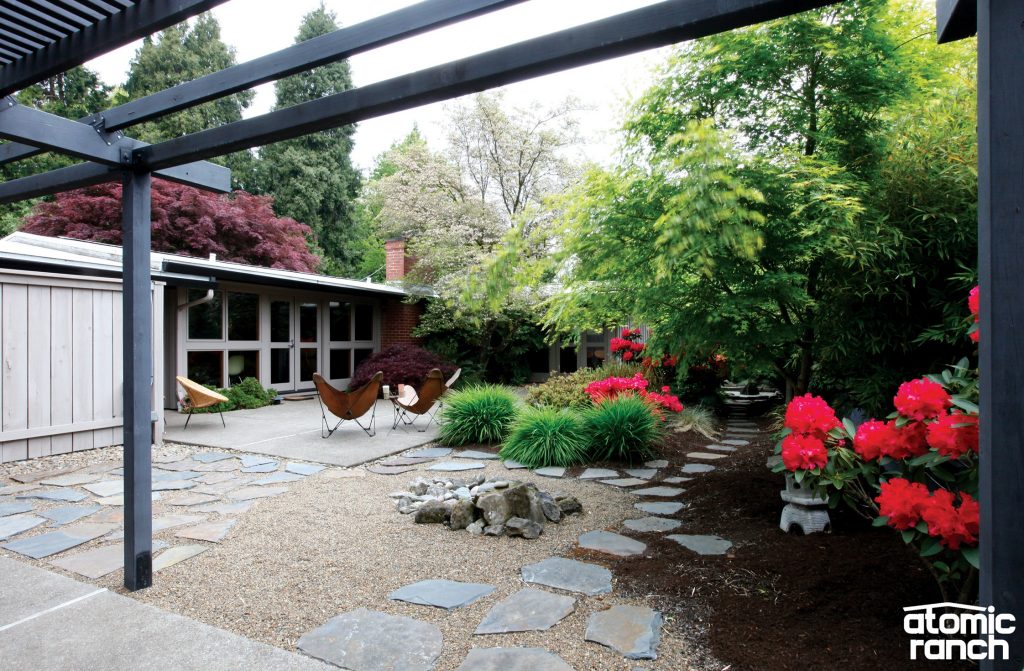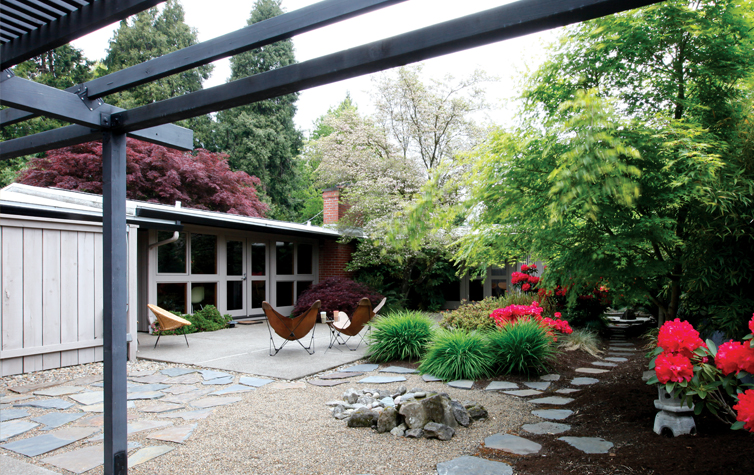
Joe and Tina Barthlow bought an old rundown 1955 Cliff May tract home (part 1) in Eugene, Oregon, with the hopes of resurrecting its midcentury glory. After settling in and learning the feel of their home (part 2), they dove into the restoration. Now, Joe continues this story, which comes with a restoration budget:
Restoration on a Budget
Like most, our renovation project was driven by budget. Every room and surface needed help—drywall, electrical upgrades, paint, flooring, insulation, bathroom tile and fixtures, new doors and replacing the roof and boiler. Structurally, our biggest challenge was restoring the original front facade of the garage. The first owner decided to convert it into a narrow family room by removing the garage door and erecting a huge fireplace with an 11’ hearth.
“My dad built the fireplace in the early 1960s,” mentioned Charles Desler, a Sacramento architect who moved into the house when it was new in 1955. “[That’s] where he put the hibachi for his daily (more or less) steak, unless it was Friday, and then it was Hamburger Heaven on the Willamette.”
We felt restoring the original garage would offer a better use of space, so we removed the large brick fireplace and rebuilt the garage door and clerestory window. Maintaining the Cliff May grid pattern with an exposed aggregate patio was a detail we wanted in our back courtyard. After removing 12 dump trucks of debris, in went a pergola, new fence, a 70’ retaining wall, two raised planting beds and a low maintenance landscape inspired by Thomas Church and the Portland Japanese Garden.
We also had to replace a rotten beam at the front of the garage and straighten out a couple of posts in the carport. “I destroyed the right front column with some car during a party when I was a teenager,” Desler admitted.
Finding Originals
The gable clerestories were intact, but none of the wood-frame windows and doors remained. We were able to acquire originals from other Cliff May owners in Eugene, and even drove down to Pomona, Calif., for some collected from remodeled houses in a May neighborhood. What originals we couldn’t find through salvage, we replicated, and all received dual pane, low-e glass. Because of the budget, nearly every project came back to restoration and careful period-correct renovation, which cost far less than radical remodeling or the contemporary “upgrades” that plague many homes of this era. Serving as our own general contractors, our D.I.Y. involvement was ultimately only drywall demo, insulation, painting, light carpentry and landscaping. Using our research to guide our design decisions really saved us a lot of money.
“We’re in this for the long haul,” I told Tina. Undoing the bad remodeling decisions of past owners has given this house a chance to survive another 50 years, which we plan to experience right along with it.












